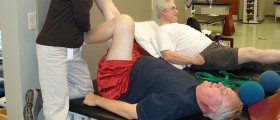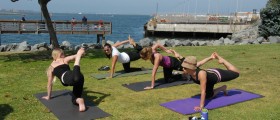
Information on Jumper’s Knee
This condition is actually medically referred to as the insertional tendinopathy and it commonly affects the skeletal systems of matureathletes. The condition involves the attachment of the patellar tendon to theinferior patellar pole.
It may also include the attachment of the quadricepstendon to the superior patellar pole or perhaps the attachment of the patellartendon to the anterior tuberosity which is located on the tibia.
Basically allof the aforementioned different types of this medical condition involvefunctional stress overload caused by jumping.
The knee needs to be examinedphysically and after the examination, certain things can be determined such aspoint tenderness at the inferior patellar pole, intra-articular effusion of theknee, point tenderness at the superior patellar pole, normal hip or ankle,point tenderness at the tibial tuberosity, normal neurovascular examination,hamstring tightness, normal motion range of the knee, quadriceps tightness andnormal stability of the ligaments.
Causes of Jumper’s Knee
The actual cause of the condition commonly referred to asthe jumper’s knee is largely undefined. It rarely involves a true type oftendinitis because there are no inflammatory conditions involved. Certainstudies have shown that it may be affiliated with vascular hyperplasia and agrowing number of apoptotic cells.
Anterior fibers must carry a much greatertensile load which indicates that the condition has nothing to do withrepetitive tensile loading. The degenerative instances of tendinosis are muchmore frequent than the instances of tendinitis which involves inflammatoryconditions.
Compressive tensile loads usually occur at the tendon’s proximalposterior aspect which changes the structures due to the alterations in thebiomechanical forces. Asymptomatic lesions are present in most cases.
Thetendons may become degenerated because of the different compressive forces andstress shielding caused by the anterior fibers. These may be very importantfactors when it comes to the insertional tendinopathy. The patellar tendon isinserted into thee tibial tuberosity. It is actually the quadriceps tendon andit gets inserted on the patella.
Patella is actually the biggest bone with asesamoid shape in the human body. The condition known as the jumper’s kneeusually affects the posterior proximal fibers of the patellar tendon.
Thecondition usually affects certain types of athletes and those are usually thosewho indulge in volleyball, basketball or perhaps long or high jumping.
Sometimes it may also affect soccer players, bicyclists and weight lifters. Biomechanicalfactor that contributes to the development of the disease is the poor flexibilityof the hamstring and quadriceps.

















Your thoughts on this
Loading...